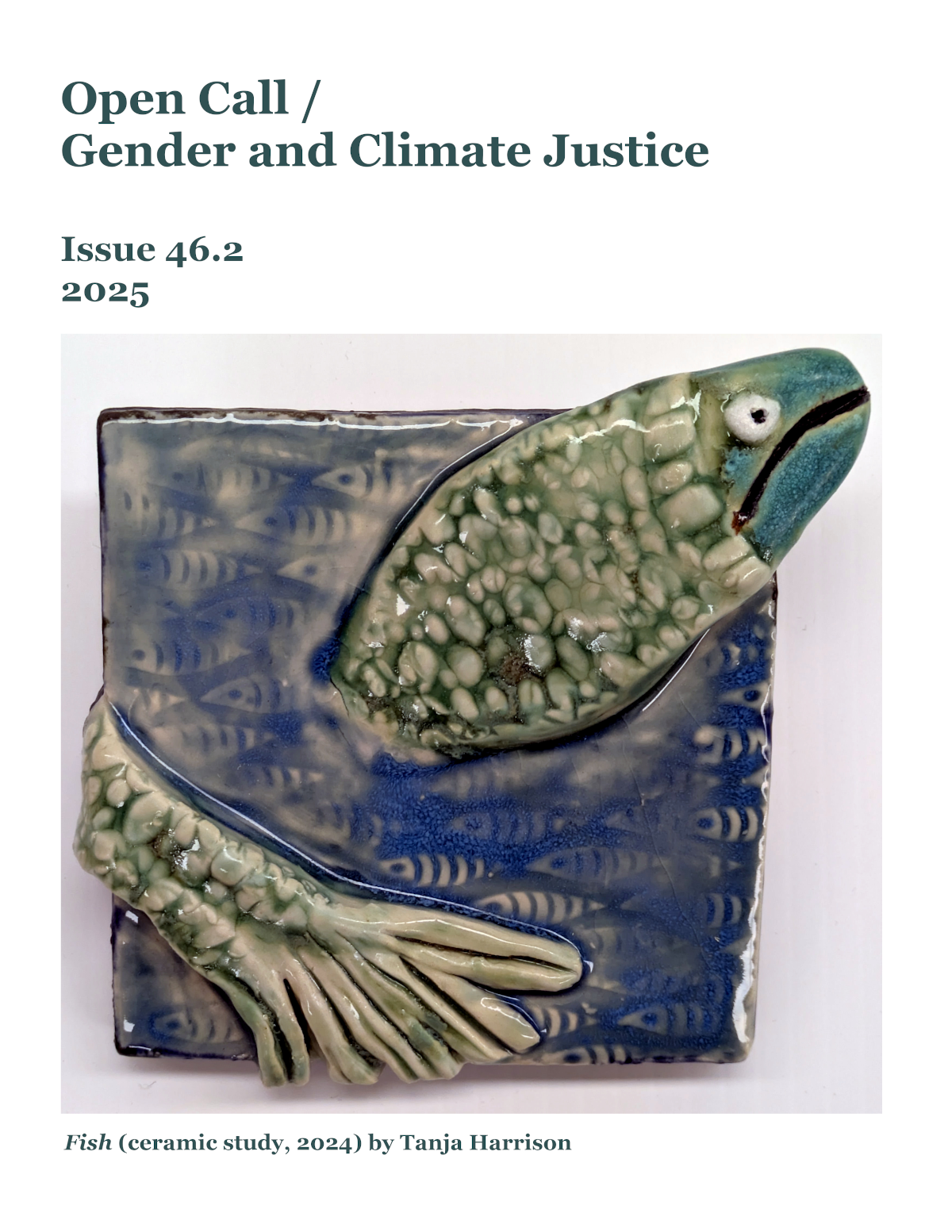Masculinities at the Crossroads
Theoretical Insights into Gendered Violence and Social Class in Taslima Nasrin's Lajja
Keywords:
social class, identity, intersectionality, masculinities, otherness, gendered violenceAbstract
The present article critically examines the intricate tapestry of gendered space within Taslima Nasrin’s Lajja (2014). It aims to unravel the social positionality of men within minority communities in conflict scenarios. Primarily based on the theories of Susan Bordo, Michael Kimmel, and Raewyn Connell, among others, the paper underscores the complexities surrounding gendered violence and the formation of male identity. It highlights the emergence of subaltern masculinity, layered with the embodied realities of masculinity. This fosters a sense of “otherness” among men belonging to minority groups. It furthers the psychological and physical trauma borne by male bodies in the discourse of gender-based violence. This paper delves into the intricate intersections of racial and ethnic identities within social class dynamics, unraveling the multifaceted expressions of masculinity within diverse communities. Through a lens focused on gendered violence, I explore the unique challenges and experiences faced by men navigating the complex terrain of multiple intersecting identity factors. The research probes into the systematic invisibility of victims who identify as men on the gender spectrum, juxtaposed with their unjust association with the image of the perpetrator. In essence, this study contributes to the theoretical discourse surrounding the connections between masculinities and social class, unraveling the multifaceted layers of gendered violence against men within the unique socio-cultural context depicted in Lajja.
References
Bordo, Susan. 1999. The Male Body: A New Look at Men in Public and in Private. The University of California Press.
Brod, Harry. 2018. The Making of Masculinities (Routledge Revivals): The New Men's Studies. Routledge.
Carpenter, R. Charli. 2006. “Recognizing Gender-based Violence Against Civilian Men and Boys in Conflict Situations.” Security Dialogue 37 (1): 83-101.
Connell, Raewyn. 2005 (1995). Masculinities. University of California Press.
De Kock, Leon. 1992. “An Interview with Gayatri Chakravorty Spivak.” Ariel: A Review of International English Literature 23(3): 29-47.
Dolan, Chris. 2014. Into the Mainstream: Addressing Sexual Violence Against Men and Boys in Conflict. Vol. 14. Briefing paper prepared for a workshop held at the Overseas Development Institute, London.
Geertz, Clifford. 1973 (2017). The Interpretation of Cultures. Basic Books.
Gottschall, Jonathan. 2004. “Explaining Wartime Rape.” The Journal of Sex Research 41(2): 129–136.
Gramsci, Antonio. 1971. Prison Notebooks. Translated by Quentin Hoare and Geoffrey Nowell Smith. Lawrence and Wishart.
Hage, Ghassan. 2009. “Waiting Out the Crisis: On Stuckedness and Governmentality.” Anthropological Theory 5(1): 463–475.
Halder, Deep. 2024. “Taslima Nasrin’s Lajja has a ‘Go to India’ Message. As a Play Now, It’s a Bold Nod to CAA.” The Print. 19 November. https://theprint.in/feature/taslima-nasrins-lajja-has-a-go-to-india-message-as-a-play-now-its-a-bold-nod-to-caa/2362511/
Haywood, Chris, Thomas Johansson, Nils Hammarén, Marcus Herz, and Andreas Ottemo. 2018. “Approaching Men and Masculinities.” In The Conundrum of Masculinity: Hegemony, Homosociality, Homophobia and Heteronormativity edited by Chris Haywood et al. Routledge.
hooks, bell. 2004. The Will to Change: Men, Masculinity, and Love. Washington Square Press.
Karmakar, Goutam. 2020. “The Body and Sexuality in Cultural Representation: An Interview with Susan Bordo.” Journal of Gender Studies 30(7): 855-863.
Kimmel, Michael. 2010. Misframing Men: The Politics of Contemporary Masculinities. Rutgers University Press.
_____. 2011. “The Social Construction of Gender Relations.” In The Gendered Society, edited by Michael Kimmel. Oxford University Press.
Minorities Rights Group. 2019. Communities (sub-section). Bangladesh. Available at: https://minorityrights.org/country/bangladesh/
Nasrin, Taslima. 2014 (1993). Lajja. Penguin Random House.
Ropar, Michael., & John Tosh. 2021 (1991). Manful Assertions: Masculinities in Britain Since 1800. Routledge.
Shahisullah, Mohammad. 2016. “Under Threat: The Challenges Facing Religious Minorities in Bangladesh.” Minority at Risk International Report. Produced with the Swedish International Development Cooperation Agency. REUTERS.
Sinha, Mrinalini. 1995 (2017). Colonial Masculinity: The ‘Manly Englishman’ and the ‘Effeminate Bengali’ in the Late Nineteenth Century. Manchester University Press.
Sivakumaran, Sandesh. 2007. “Sexual Violence Against Men in Armed Conflict.” European Journal of International Law 18(2): 253-276.
Solangon, Sarah & Preeti Patel. 2012. “Sexual Violence Against Men in Countries Affected by Armed Conflict.” Conflict, Security & Development 12(4):17–442
Strachey, J. (1888) 1911). India, Its Administration and Progress. London: Macmillan &. Co., pp. 449-50.
UN Office for the Coordination of Humanitarian Affairs (UN OCHA). 2008. “The Nature, Scope, and Motivation for Sexual Violence Against Men and Boys in Armed Conflict.” Paper presented at UN OCHA Research Meeting, New York, June.
UNHRC. 2004. Minorities at Risk Project, Chronology for Hindus in Bangladesh. available at: https://www.refworld.org/docid/469f3869c.html [accessed 20 November 2024]
Wong, Y. Joel, and Wang, Shu-Yi. 2022. Toward an Integrative Psychology of Masculinities. Psychology of Men & Masculinities 23(3): 285–298.
Downloads
Published
Issue
Section
License
Copyright (c) 2025 Sanjana Chakraborty, Dhananjay Tripathi

This work is licensed under a Creative Commons Attribution 4.0 International License.
Authors who publish with this journal agree to the following terms:
1. Authors retain copyright and grant the journal right of first publication, with the work simultaneously licensed under a Creative Commons Attribution 4.0 International License that allows others to share the work with an acknowledgement of the work's authorship and initial publication in this journal.
2. Authors are aware that articles published in Atlantis are indexed and made available through various scholarly and professional search tools, including but not limited to Erudit.
3. Authors are able to enter into separate, additional contractual arrangements for the non-exclusive distribution of the journal's published version of the work (e.g., post it to an institutional repository or publish it in a book), with an acknowledgement of its initial publication in this journal.
4. Authors are permitted and encouraged to preprint their work, that is, post their work online (e.g., in institutional repositories or on their website) prior to and during the submission process. This can lead to productive exchanges, as well as earlier and greater citation of published work. Read more on preprints here.







